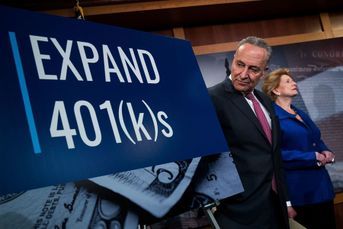DOL fiduciary rule: Transfers of IRAs in the new fiduciary world
Little has been said about prudent recommendations to transfer an IRA from another firm to the adviser's firm.
Advisers to plans, participants and individual retirement accounts are now fiduciaries under the Department of Labor’s new regulation and prohibited transaction exemptions. As a general statement, any investment recommendation will be fiduciary advice. And, the definition of “investment recommendation” is very broad.
Under the conflict-of-interest rule, the implementation period of which began June 9, recommendations of investments and insurance products will be fiduciary advice; referrals to nondiscretionary and discretionary investment advisers will be fiduciary advice; recommendations about investment policies and strategies will be fiduciary advice; and recommendations to take distributions and rollovers from plans and to transfer IRAs will be fiduciary advice.
While the requirements for most of those recommendations have been thoroughly discussed, little has been said about prudent recommendations to transfer an IRA from another firm to the adviser’s firm.
There are three ways in which an IRA can be transferred. The first is “unsolicited,” the second is “education,” and the third is a fiduciary recommendation. Unsolicited and education transfers are not fiduciary advice and, thus, are not subject to the new rules. Let’s look at each of those.
Briefly stated, an unsolicited transfer is one where the retirement investor decides on his/her own, perhaps because of a preexisting relationship with the adviser, to transfer an IRA to the adviser. In this case, the adviser did not make a recommendation or provide education. (In that regard, the DOL interprets “recommendation” in an expansive manner; it includes a “suggestion” that the retirement investor engage in, or refrain from, a particular course of action.)
The second approach — education — can be used by providing an IRA owner with information to consider when making a decision about transferring an IRA from one firm to another. To qualify as education, the discussions and materials must be unbiased and relatively complete, and cannot include even a suggestion that the IRA owner transfer his/her IRA to the adviser’s firm.
If the educational approach is taken, it should be appropriately documented to protect against a disagreement about whether the adviser provided education or a recommendation. As an example, one educational approach would be to provide the IRA owner with a checklist of the factors to be considered for transferring an IRA; a brochure of the investments, services and costs at the adviser’s firm; and a form on which the IRA owner acknowledges that the adviser did not recommend a transfer.
In addition, a conservative approach could include a script for discussion of the most important issues for IRA owners to consider. That would augment the checklist, but would highlight, in an educational manner, the most important issues for a typical IRA owner. The considerations in the checklist and script should include, at a minimum, the investments, services and costs for the current adviser, as well as those for a new adviser. The IRA owner would be instructed to take those factors into account in light of his or her needs, objectives, financial circumstances and risk tolerance.
The third alternative is for an adviser to make a recommendation. In that case, the adviser would have a duty to engage in a best-interest process to obtain the information needed for a prudent recommendation.
At a minimum, that would include, the investments, costs and services for the current IRA; the investments, costs and services for an IRA at the adviser’s firm; and the needs and circumstances of the IRA owner. Once that information is obtained and reviewed, the adviser would need to prudently evaluate it, and then make a recommendation that is in the best interest of the IRA owner. In most cases, the investments and costs for both the current adviser and the recommending adviser will be similar. As a result, the analysis should turn on the services to be offered and their value to the retirement investor.
Regardless of the approach taken, it is important to document it. That is particularly true of the fiduciary approach because the Department of Labor takes the position that documentation is an integral part of a prudent process. However, it is also true of the unsolicited and educational alternatives, for risk management purposes,
These rules are now in effect. Advisers and their firms also need to have processes in place, including policies, procedures and documentation, to satisfy the requirements of the new rules.
Fred Reish is a partner at the law firm Drinker Biddle & Reath.
Learn more about reprints and licensing for this article.







